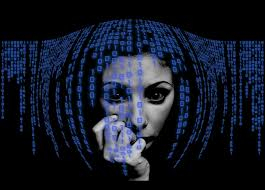
How do our brains recognize faces? A new study by researchers at the Weizmann Institute of Science gives some insight into the process. Scientists find a lot of similarity between the encoding of faces in the brain and in the processing by artificial intelligence systems called deep neural networks. Whenever a human looks at a face, it triggers off a group of neurons in the visual cortex, which get activated and fire off signals. Some neurons respond only to faces, though not to other objects. Still, do the neuronal activations band together, leading to face perception and recognition?
Research on the subject was published in Nature Communications. Prof. Rafi Malach, of the Neurobiology Department, and Shany Grossman, a PhD student in his group, addressed the question by comparing brain activity with deep neural networks. The computing systems revolutionized artificial intelligence. They took up some tasks, learning from existing data sets. Now they have improved phenomenally in the performance of many visual tasks, including face recognition.
Researchers studied 33 epilepsy patients who had electrodes implanted in different areas of their brains. They agreed to voluntarily contribute to research. The data from the 33 patients were analysed by Grossman and Guy Gaziv, a research student in the Computer Science and Applied Mathematics Department, in the lab of Dr Ashesh Mehta, Feinstein Institute for Medical Research in Manhasset, New York.
The volunteers were exposed to various faces from diverse image databases, including celebrities as well as nonentities. The patients' brains were monitored through recordings from 96 electrodes that were implanted into those parts of the brain that were perceptive to faces.
Recordings showed that every face brought out a unique pattern of neuronal activity. Various groups of neurons would fire off at various intensities. A few faces evoked somewhat similar-looking brain activities. This translated to both showing parallel activity "signatures". However, many other faces showed activation patterns that were very different from each other. Scientists probed into whether the activation signatures had a responsible role to play in the human skill to recognize faces or not.
The human face recognition system was compared to another neural network that had a face recognition capability. This artificial network, loosely inspired by the human visual system, contains a number of artificial elements that are like neurons, arranged in "layers" that total up to more than two dozen. The artificial neurons in every layer identified and blended the various facial characteristics, right from simple lines and shapes to complex features that were parts of the eye and other facial fragments. They could even be definitive ones marking out a person's identity.
Scientists found a lot of similarities between the human and artificial systems, which was found to stand out in the middle layers. These represented the real pictorial faces rather than the abstract identity of the face owners.
"It's highly informative that two such drastically different systems -- a biological and an artificial one, that is, the brain and a deep neural network -- have evolved in such a way that they possess similar characteristics," says Malach. "I would call this -- just as human-made airplanes show similarity to those of wings of insects, birds and even mammals. Such convergence points to the crucial importance of unique face-coding patterns in face recognition."









